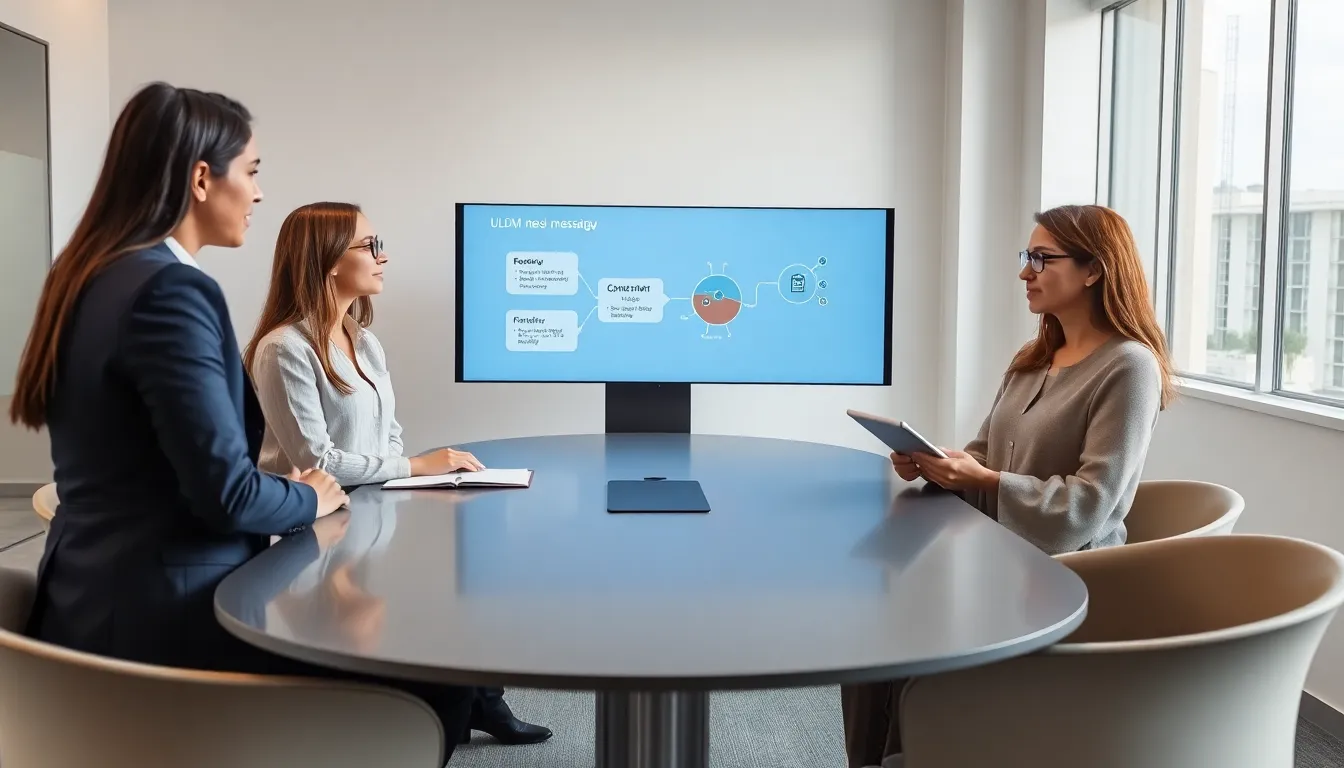Table of Contents
ToggleImagine a world where digital transactions happen seamlessly, securely, and at lightning speed. Enter ULDM, Ultra Lightweight Data Messaging, that’s shaking up the financial landscape like a good cup of coffee on a Monday morning. If you thought you knew everything about Bitclassic, think again. This article dives into ULDM, shining a spotlight on its features, applications, and the fascinating relationship it has with Bitclassic. Buckle up, because this is going to be a ride through the cutting edge of digital communication.
What Is ULDM?

ULDM, or Ultra Lightweight Data Messaging, is a revolutionary protocol designed for enhanced data transmission. Think of it as a lightweight champion in the ring of complex, heavyweight messaging systems. Unlike traditional protocols that can bog down systems with excessive overhead, ULDM prioritizes speed and efficiency. It’s like switching from a bulky jalopy to a sleek sports car when navigating data traffic. By minimizing payload sizes and optimizing transfer protocols, ULDM eases the burdens of mobile transactions and real-time communication. This innovation is particularly valuable for environments where every millisecond counts, such as IoT devices, remote sensors, and, of course, digital currencies.
Key Features of ULDM
When discussing ULDM’s key features, a few standout points deserve the spotlight:
- Minimal Overhead: ULDM optimizes data packets to transmit only what’s essential, saving bandwidth and improving speed.
- Scalability: As demands grow, ULDM keeps pace without breaking a sweat. Businesses can scale their operations without the fear of system overload.
- Interoperability: ULDM is designed to work across various platforms. Whether it’s a mobile app or a centralized server, this protocol bridges gaps, much like a universal remote.
- Robust Security: Security shouldn’t be an afterthought, and ULDM incorporates advanced encryption methods to keep data safe from prying eyes.
- Real-Time Capabilities: The ability to send and receive data instantaneously is a game-changer in sectors that rely on real-time updates, such as financial markets.
Understanding Bitclassic
Bitclassic is a term that encapsulates a specific approach to digital currencies, emphasizing simplicity and reliability. At its core, Bitclassic harnesses the foundational principles of early cryptocurrencies, designed to be user-friendly and accessible. Imagine someone laying down the groundwork for a new neighborhood, instead of flashy structures, the focus is on durable homes that stand the test of time. Bitclassic aims to do just that, providing a solid alternative to more complex digital currencies.
The platform enables fast and efficient transactions, which are recorded on a decentralized ledger. Users enjoy lower transaction fees and faster confirmations compared to traditional systems. As digital currencies continue to evolve, Bitclassic remains a steadfast choice for those prioritizing reliability in the ever-changing landscape of crypto.
The Relationship Between ULDM and Bitclassic
Now, here’s where things get interesting. ULDM and Bitclassic aren’t just parallel lines: they intertwine beautifully. Think of ULDM as the high-speed lane for data, while Bitclassic is the sturdy vehicle making those transactions happen. When employed together, they create a seamless experience for users, maximizing transaction speeds and reducing delays.
ULDM enhances Bitclassic’s framework by enabling rapid data exchange, allowing transactions to be completed quicker than ever. Instead of waiting in line at the digital bank, users can zip through the process. The synergy between the two ensures that as more users flock to digital currencies, the infrastructure can handle the rush without hiccups.
Use Cases and Applications
The potential applications of ULDM and Bitclassic are varied and compelling. Here are a few notable examples:
- E-commerce Transactions: Retailers can harness ULDM’s speed for flash sales, ensuring customers never miss a deal due to slow processing.
- IoT Devices: With its minimal overhead, ULDM fits perfectly into the Internet of Things, enabling connected devices to communicate efficiently.
- Financial Trading: In fast-paced environments like stock exchanges, the integration of ULDM can cut down transaction times, potentially increasing profits.
- Remittance Services: Speed and affordability make ULDM and Bitclassic ideal for international money transfers, which can traditionally take days.
These scenarios illustrate how businesses can leverage these technologies to enhance user experience while also optimizing operational processes.
Challenges and Considerations
While ULDM and Bitclassic present exciting opportunities, they aren’t without challenges:
- Adoption Rates: Not everyone is eager to embrace new technologies, which could slow down acceptance of ULDM in established sectors.
- Security Concerns: Although ULDM offers strong encryption, no system is infallible. Cybersecurity threats remain a constant worry.
- Integration Complexity: Businesses may struggle to integrate ULDM into existing systems, leading to potential roadblocks.
Overcoming these hurdles is essential for these technologies to gain traction and fulfill their potential.






